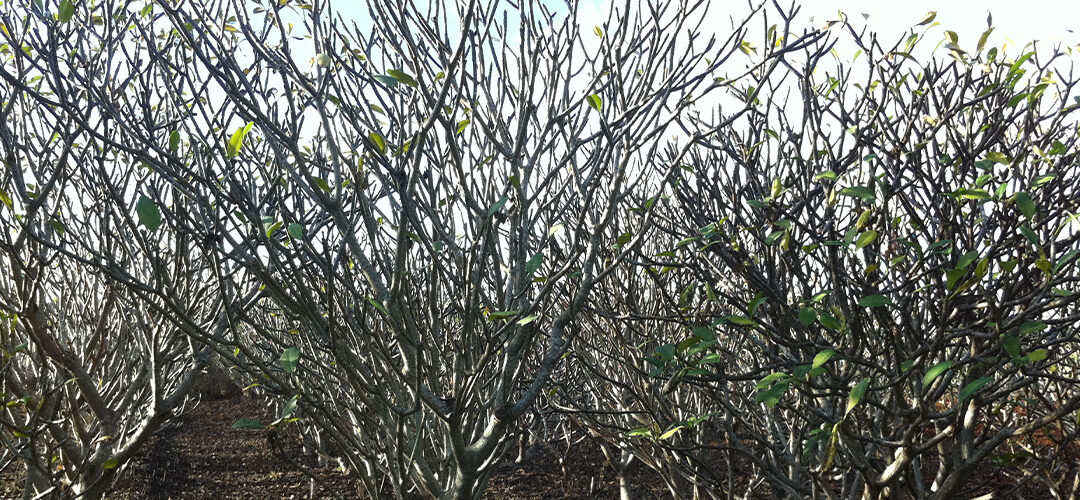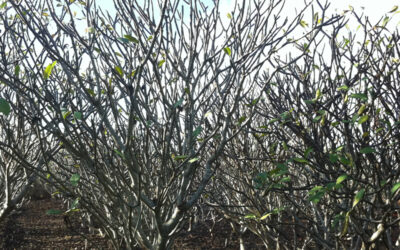

Caring for your Frangipani
How do I care for my Frangipani?
Thankfully, frangipani is one of those trees that keeps on thriving year in and year out with minimal attention, provided it remains healthy. During winter your trees require little water, and throughout spring and summer water more often, as this is the key to bearing flowers. If you can’t water your tree, it will survive. However, you may notice a reduction in flowers. To get healthy growth and strong flowers, fertilise your tree during the warmer months, but in most fertile soils your frangipani will be ok, regardless.

Here’s a few more tips
- In winter, let the soil dry up and only water intermittently to keep the feeding roots from drying out completely. In pots and planters to stop the potting mix from drying out to the point where the mix turns hydrophobic and has difficulty in wetting up during the warmer growing months, also water intermittently.
- In spring, as soon as the leaves start to open, begin with gradual watering of the soil profile.
- In summer, water often.
- Did you know that you can have a frangipani tree indoors? Simply be aware of the location, finding a sunny place with direct sunlight for at least four hours each day. Frangipanis will also grow in glasshouses and sunrooms in the coldest parts of New Zealand and Tasmania.
Challenges
- Watch this video for how to control disease and also gift someone you love a frangipani cutting.
- Read our blog on how to strike a cutting.
How to Overcome Pests and Disease
We’ve all heard of rust in a car, but there’s also rust that affects your gorgeous frangipani. Rust on the tree usually occurs during the humid warm months and in particular towards the end of summer. This pathogen is known worldwide to attack leaves later in the season which helps the trees defoliate and mulch down during the dormant winter months.
Luckily, there is no immediate concerns with frangipani rust. Yes, it may appear unsightly, but it generally has no damaging effects other than leaves falling off and creating a mulch layer under your tree. Although It is recommended to remove the dead leaves from under the trees and mulch to reduce infections in subsequent years, you can also just mow the leaves or cover them with a straw or bark mulch layer, which keeps increasing soil health under your trees.
If you would like to combat the rust, then it is treatable. We use commonly available fungicides such as Mancozeb and Copper Oxychloride. Also, pests such as spider mites, fruit spotting bugs, scale insects, grubs, and moth larvae can affect the health of your frangipani. We suggest treating your tree with white oil or a copper-based fungicide.
Is Frangipani Sap Poisonous?
Frangipanis belong to the family Anacardiacea. Frangipani sap is considered poisonous however frangipani essence and essential oils are used readily worldwide in perfumes, remedies and rubs. It is advisable to take care when handling frangipani flowers and plant parts as they exude a milky sap when leaves, flowers and stems are broken off, however it washes off easily.
Contact us at Fancy Frangipanis today!




Recent Posts
Frangipani flowers love summer. The Aussie Christmas Tree.
“Summer loving had me a blast. Summer loving happened so fast…Summer days drifting away, to, oh,...

Frangipani flowers love summer. The Aussie Christmas Tree.
“Summer loving had me a blast. Summer loving happened so fast…Summer days drifting away, to, oh,...
Make a frangipani lei. Relive memories. Frangipani bridal bouquet.
Exotic frangipani blooms and displays transcend to a sweet place.The frangipani bloom is heralded...

Make a frangipani lei. Relive memories. Frangipani bridal bouquet.
Exotic frangipani blooms and displays transcend to a sweet place.The frangipani bloom is heralded...
My frangipani has no leaves! Help!
My Frangipani is losing its leaves and flowers and is naked. Why?First of all, it’s ok! Your...

My frangipani has no leaves! Help!
My Frangipani is losing its leaves and flowers and is naked. Why?First of all, it’s ok! Your...




